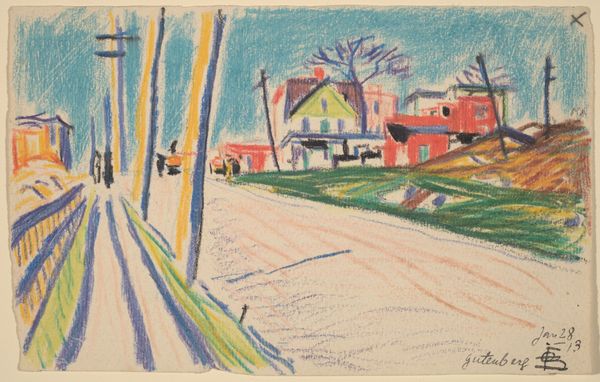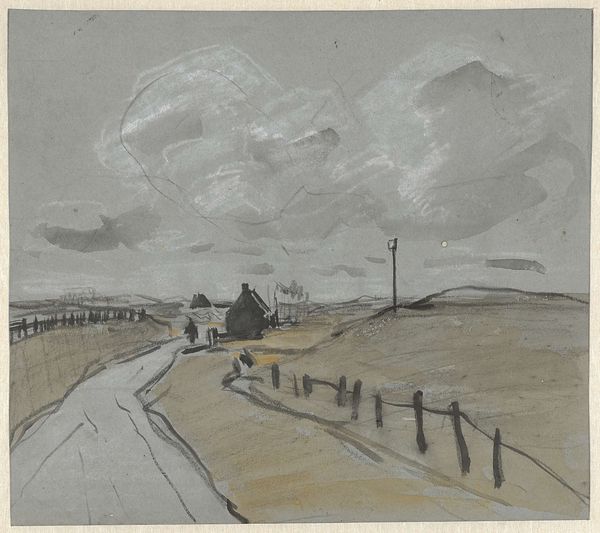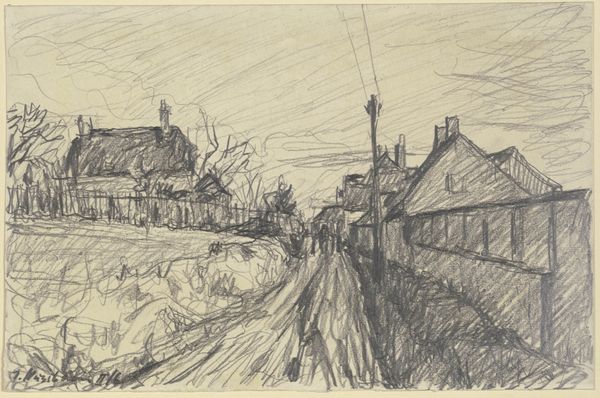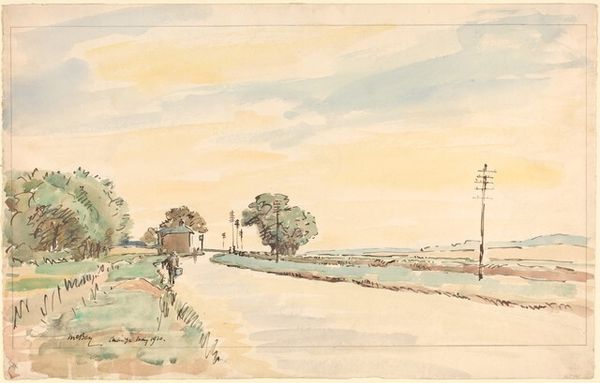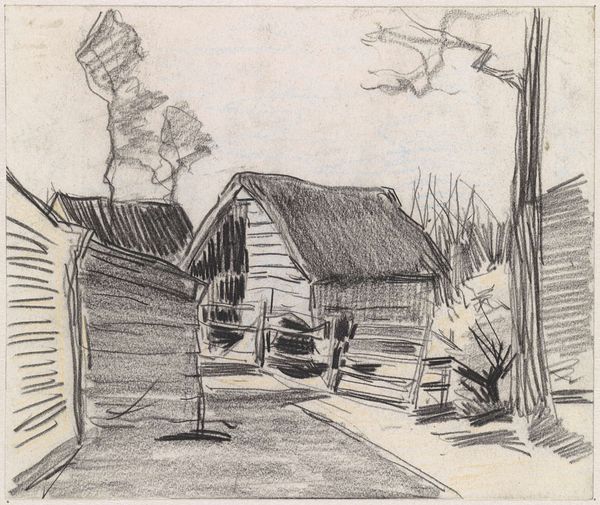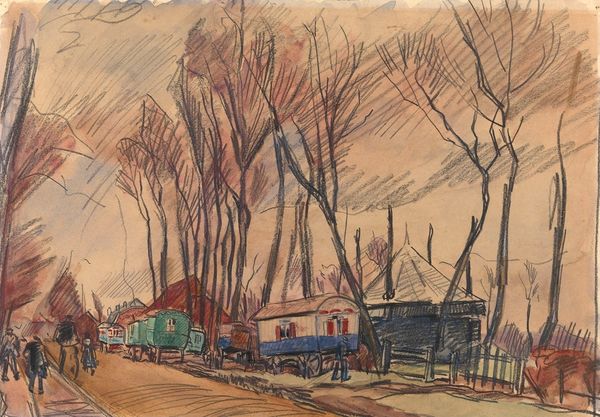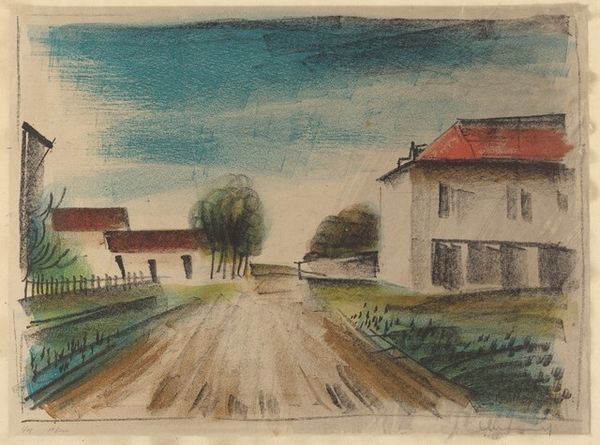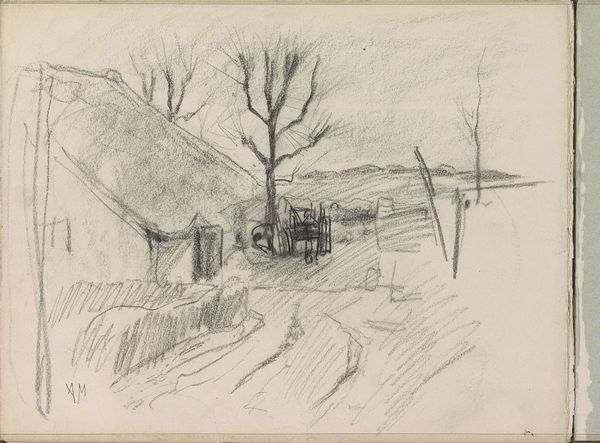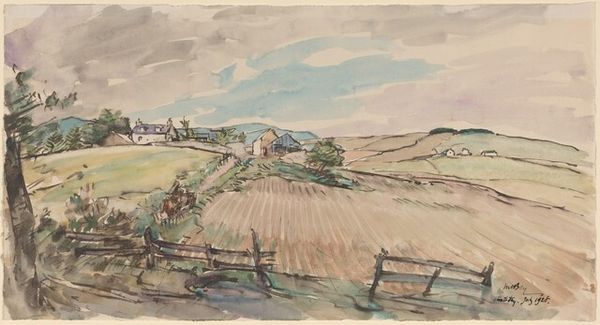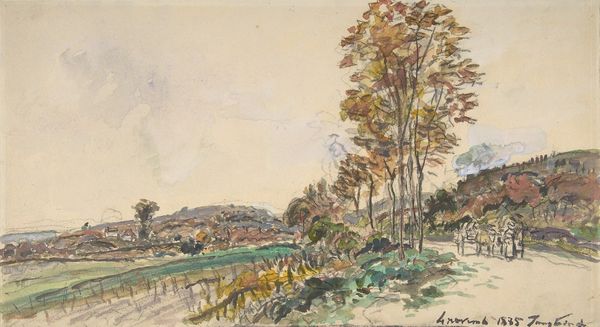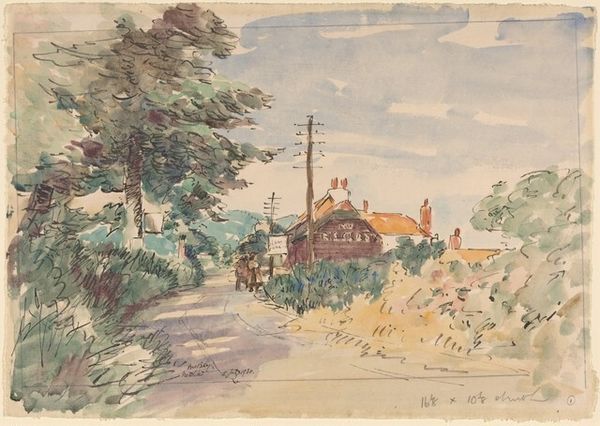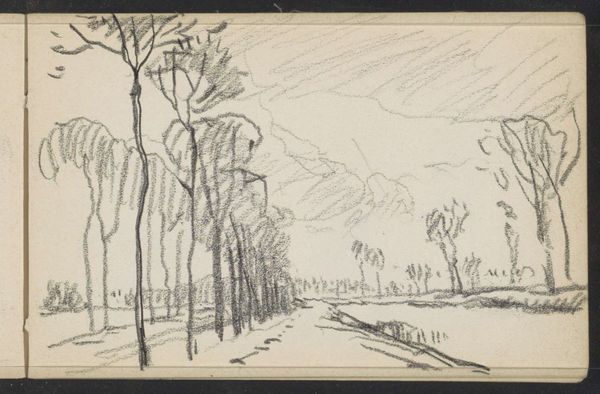
Copyright: Public Domain: Artvee
Arnold Peter Weisz-Kubínčan, born in 1898, created this watercolor drawing depicting a sad man in a village scene. As a Jewish artist in Europe, Weisz-Kubínčan’s life and work were deeply affected by the rising tide of antisemitism during the early 20th century. The lone figure in the foreground immediately draws our attention, his posture and placement suggesting isolation. This feeling of alienation might echo the artist's own experience as a member of a marginalized group. The village, rendered with loose lines and subdued colors, evokes a sense of melancholy. Even the landscape seems to reflect the man's inner state. The telephone poles could speak to the ambivalent nature of progress, a world that is rapidly modernizing while simultaneously threatening to exclude certain populations. Weisz-Kubínčan tragically died in 1944. This drawing therefore serves as a poignant reminder of the human cost of intolerance, reflecting on the lives and stories that were cut short during the Holocaust.
Comments
No comments
Be the first to comment and join the conversation on the ultimate creative platform.
